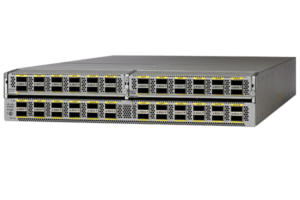Worth Reading: Outage at Git
The post Worth Reading: Outage at Git appeared first on 'net work.
The post Worth Reading: Outage at Git appeared first on 'net work.
In the second part of assignments for the first week of Kirk Byers Python for Network Engineers class we will be working with IPv6 addresses.
We start with the following IPv6 address: FE80:0000:0000:0000:0101:A3EF:EE1E:1719.
The goal is then to split this address into individual parts. The delimiter in an IPv6 address is a colon. For an IPv4 address we would have used a dot instead. Python has a built-in function for splitting strings. To split the address we use this function and tell Python that a colon is our delimiter.
print("IPv6 address split:")
print(ipv6_split)
print(type(ipv6_split))
This means that we have turned our string into a list, consisting of eight parts of the IPv6 address.
daniel@daniel-iperf3:~/python/Week1$ python3 ipv6.py IPv6 address split: ['FE80', '0000', '0000', '0000', '0101', 'A3EF', 'EE1E', '1719'] <class 'list'>
To rejoin the address again the built-in function “join()” will be used. The syntax for this function is a bit awkward besides that it’s easy to use.
ipv6_new = ":".join(ipv6_split)
print("IPv6 address rejoined:")
print(ipv6_new)
print(type(ipv6_new))
First we tell Python to put a colon between all the parts we are joining. The output then looks like this:
daniel@daniel-iperf3:~/python/Week1$ python3 ipv6.py IPv6 address rejoined: FE80:0000:0000:0000:0101:A3EF:EE1E:1719 <class 'str'>
Note that the Continue reading
Continuing my look at Cisco’s Data Center Network Manager (DCNM) software, I had to swap out a faulty spine switch recently, and got a chance to find out whether I could use DCNM to make the RMA process a little less painful than it would normally be.

If I had a dream, albeit a rather sad one, it would be to be able to swap out a hardware component in my network quickly and efficiently, and not have to mess around.
DCNM has all the elements to make this feasible. Given a device serial number, I’ve already confirmed that DCNM can automatically deploy the correct firmware version and base configuration when deploying a new fabric, so there’s no reason it couldn’t be used to do the same thing for a replacement switch, but this time deploying the complete, production configuration in one step. Happily I already have the configuration for the spine switch I’m replacing, because DCNM takes frequent backups. I also have the appropriate firmware loaded to DCNM’s software repository because I used it to build the fabric in the first place. So how do I approach the RMA?
Once the replacement switch was received Continue reading
 VMware NSX Micro-segmentation Day 1 is available for free download! VMware NSX Micro-segmentation Day 1 is a concise book that provides the necessary information to guide organizations interested in bolstering their security posture through the implementation of micro-segmentation.VMware NSX Micro-segmentation Day 1 highlights the importance of micro-segmentation in enabling better data center cyber hygiene. It also provides the knowledge and guidance needed to effectively design and implement a data center security strategy around micro-segmentation.
VMware NSX Micro-segmentation Day 1 is available for free download! VMware NSX Micro-segmentation Day 1 is a concise book that provides the necessary information to guide organizations interested in bolstering their security posture through the implementation of micro-segmentation.VMware NSX Micro-segmentation Day 1 highlights the importance of micro-segmentation in enabling better data center cyber hygiene. It also provides the knowledge and guidance needed to effectively design and implement a data center security strategy around micro-segmentation.
VMware NSX Micro-segmentation covers the following topics.
 Micro-segmentation Definition
Micro-segmentation Definition
The post VMware NSX Micro-segmentation Day 1 Book Available! appeared first on The Network Virtualization Blog.